Where to go Birding in the Netherlands

by Arthur
Posted on Saturday, January 3rd, 2009 at 5:05 pm CET
Here is a list of my five favorite birdwatching places in the Netherlands and some of my favorite photos of birds that we’ve seen. My top 5 birding locations are:
- Lepelaarplassen, Flevoland
- De Muy & De Petten on Texel, Noord Holland
- Starrevaart in Leidschendam, Zuid Holland
- Zuidpier in IJmuiden, Zuid Holland
- De Putten, Noord Holland
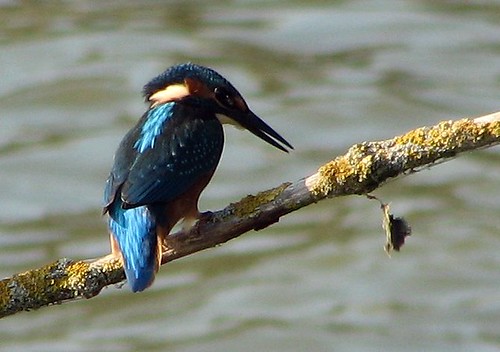
Common Kingfisher near De Lepelaarshut1. Lepelaarplassen, Flevoland ▲
Oostvaardersplassen in Flevoland, one of twelve Dutch provinces and the last one to be established in 1986 after being reclaimed from the sea, is a great area to look for wildlife and especially birds. De Lepelaarplassen (‘Spoonbill Lakes’), in the south-west part of this area has three bird hides. Two of these are only accessible on organized excursions and one is open to the public: De Lepelaarshut. This is a great place to see White-tailed Eagles, Water Rails, Whooper Swans and Kingfishers. I saw the Kingfisher pictured above here in 2007 after visiting the annual Vogelfestival (‘Bird Fair’).
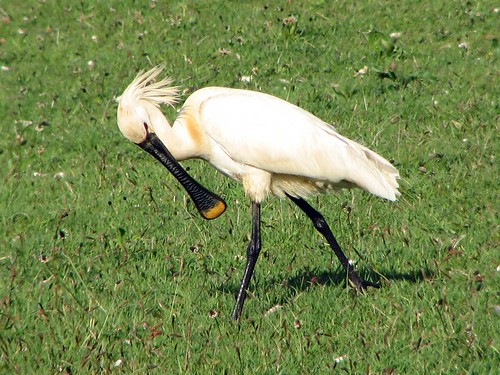
European Spoonbill at De Petten2. De Muy & De Petten, Texel ▲
Texel is the largest and most populated of the Dutch Frisian Islands and also the westernmost of this archipelago, which extends to Denmark. Our last visit to Texel was in July 2008. We took a ferry from Den Helder and rented bikes for the day. There are many great places for birding and two of my favorite ones are right near the ferry terminal: De Petten and De Muy. There are many Spoonbill here and when we visited there were hundreds of them flying back and forth from their nests to feeding grounds.
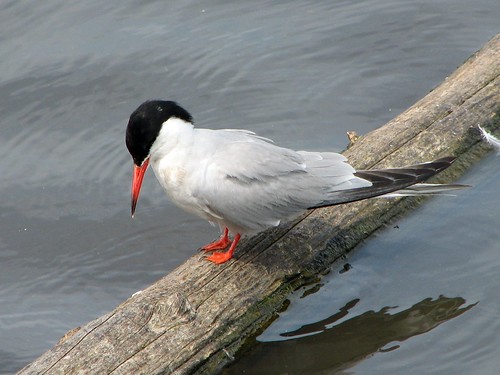
Common Tern at Starrevaart3. Starrevaart, Leidschendam ▲
One of the best birding locations near our old house in Leiden, Starrevaart is an old polder that was flooded in 1986 and made into a wetland for migrating birds. We bicycled here many times and saw hundreds of cormorants, terns, spoonbills, ducks, swans and gulls. On the east-side of the lake is a bird hide called De Vogelknip, which gives an excellent view of the lake and a small island nearby. The island is almost always covered with birds, and different ones depending on the time of the year.
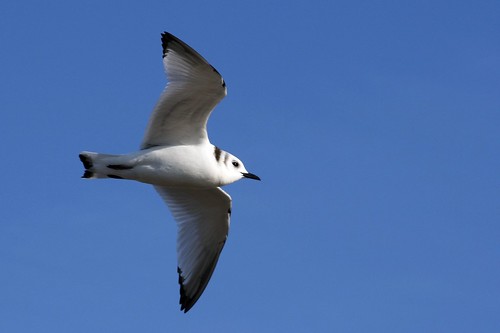
Black-legged Kittiwake at Zuidpier4. Zuidpier, IJmuiden ▲
Zuidpier is a 3.3-km / 2-mile pier that extends into the North Sea from the harbor at IJmuiden, west of Amsterdam. It is an excellent place to go birdwatching as well as whale watching! We drove up to IJmuiden many times to make the windy walk out to the light house at the end of the pier. My favorite bird we’ve seen here is the Little Auk, a cute little penguin-shaped bird that was bobbing in the waves very near the pier.
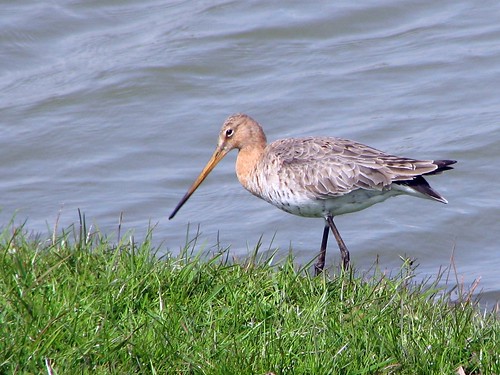
Black-tailed Godwit at De Putten5. De Putten, Noord Holland ▲
De Putten is located along the North Sea dike in the province of Noord Holland, between Petten and Camperduin. The wetlands were established in the 19th century when clay was dug out to raise and strengthen the dike. The holes (‘putten’) that appeared are filled with brackish water that attract many different birds and especially migratory birds. Just north of here lies the nature reserve of Zwanewater, which is another great place to make a walk and go birding. They have a large floating bird hide on one of their two lakes there.
Here is a list of my five favorite birdwatching places in the Netherlands and some of my favorite photos of birds that we’ve seen. My top 5 birding locations are:
- Lepelaarplassen, Flevoland
- De Muy & De Petten on Texel, Noord Holland
- Starrevaart in Leidschendam, Zuid Holland
- Zuidpier in IJmuiden, Zuid Holland
- De Putten, Noord Holland

Common Kingfisher near De Lepelaarshut
1. Lepelaarplassen, Flevoland ▲
Oostvaardersplassen in Flevoland, one of twelve Dutch provinces and the last one to be established in 1986 after being reclaimed from the sea, is a great area to look for wildlife and especially birds. De Lepelaarplassen (‘Spoonbill Lakes’), in the south-west part of this area has three bird hides. Two of these are only accessible on organized excursions and one is open to the public: De Lepelaarshut. This is a great place to see White-tailed Eagles, Water Rails, Whooper Swans and Kingfishers. I saw the Kingfisher pictured above here in 2007 after visiting the annual Vogelfestival (‘Bird Fair’).

European Spoonbill at De Petten
2. De Muy & De Petten, Texel ▲
Texel is the largest and most populated of the Dutch Frisian Islands and also the westernmost of this archipelago, which extends to Denmark. Our last visit to Texel was in July 2008. We took a ferry from Den Helder and rented bikes for the day. There are many great places for birding and two of my favorite ones are right near the ferry terminal: De Petten and De Muy. There are many Spoonbill here and when we visited there were hundreds of them flying back and forth from their nests to feeding grounds.

Common Tern at Starrevaart
3. Starrevaart, Leidschendam ▲
One of the best birding locations near our old house in Leiden, Starrevaart is an old polder that was flooded in 1986 and made into a wetland for migrating birds. We bicycled here many times and saw hundreds of cormorants, terns, spoonbills, ducks, swans and gulls. On the east-side of the lake is a bird hide called De Vogelknip, which gives an excellent view of the lake and a small island nearby. The island is almost always covered with birds, and different ones depending on the time of the year.

Black-legged Kittiwake at Zuidpier
4. Zuidpier, IJmuiden ▲
Zuidpier is a 3.3-km / 2-mile pier that extends into the North Sea from the harbor at IJmuiden, west of Amsterdam. It is an excellent place to go birdwatching as well as whale watching! We drove up to IJmuiden many times to make the windy walk out to the light house at the end of the pier. My favorite bird we’ve seen here is the Little Auk, a cute little penguin-shaped bird that was bobbing in the waves very near the pier.

Black-tailed Godwit at De Putten
5. De Putten, Noord Holland ▲
De Putten is located along the North Sea dike in the province of Noord Holland, between Petten and Camperduin. The wetlands were established in the 19th century when clay was dug out to raise and strengthen the dike. The holes (‘putten’) that appeared are filled with brackish water that attract many different birds and especially migratory birds. Just north of here lies the nature reserve of Zwanewater, which is another great place to make a walk and go birding. They have a large floating bird hide on one of their two lakes there.


2:56 pm
Thank you so much……………… I have been on google all night trying to find a place to buy vanilla wafers 🙂 hope they have jello pudding too 🙂
Your great since Im super home sick at the moment….